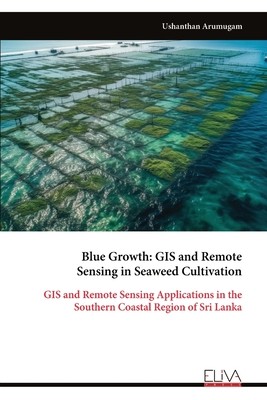
- We will send in 10–14 business days.
- Author: Ushanthan Arumugam
- Publisher: Eliva Press
- ISBN-10: 1636487068
- ISBN-13: 9781636487069
- Format: 15.2 x 22.9 x 0.6 cm, mīksti vāki
- Language: English
- SAVE -10% with code: EXTRA
Blue Growth - GIS and Remote Sensing in Seaweed Cultivation (e-book) (used book) | bookbook.eu
Reviews
Description
In 'Mapping the Future of Seaweed Cultivation, ' authors A. Ushanthan, S. S. Herath, and K. Sanjaya present groundbreaking research on the site selection for seaweed culture in the southern coastal region of Sri Lanka. This comprehensive study leverages the power of Geographic Information Systems (GIS) and remote sensing technologies to identify optimal locations for seaweed farming, addressing the pressing need for sustainable mariculture practices in the region. Seaweed is an invaluable resource used extensively in the cosmetics, fertilizers, and food industries, with significant economic and environmental benefits. However, the success of seaweed cultivation hinges on the selection of suitable sites that offer the right conditions for growth. Recognizing the challenges faced by the coastal communities in Sri Lanka, this book introduces a novel GIS and remote sensing-based method to pinpoint the most favorable areas for seaweed farming. The authors detail their meticulous methodology, which includes the extraction of key environmental parameters such as Sea Surface Temperature (SST), Total Suspended Matter (TSM), and bathymetry from Landsat 8 (OLI) satellite images. Wind and current data are analyzed to further refine the site selection process. By integrating these diverse datasets, the study offers a robust framework for assessing site suitability, ensuring high accuracy through ground truthing and statistical correlation analysis. The findings reveal significant seasonal variations in the suitability of different coastal areas, with Ambalanthota and Tangalle emerging as prime locations for seaweed culture. The book discusses the implications of these findings for the mariculture industry and provides practical recommendations for implementing seaweed cultivation projects.
EXTRA 10 % discount with code: EXTRA
The promotion ends in 22d.16:44:55
The discount code is valid when purchasing from 10 €. Discounts do not stack.
- Author: Ushanthan Arumugam
- Publisher: Eliva Press
- ISBN-10: 1636487068
- ISBN-13: 9781636487069
- Format: 15.2 x 22.9 x 0.6 cm, mīksti vāki
- Language: English English
In 'Mapping the Future of Seaweed Cultivation, ' authors A. Ushanthan, S. S. Herath, and K. Sanjaya present groundbreaking research on the site selection for seaweed culture in the southern coastal region of Sri Lanka. This comprehensive study leverages the power of Geographic Information Systems (GIS) and remote sensing technologies to identify optimal locations for seaweed farming, addressing the pressing need for sustainable mariculture practices in the region. Seaweed is an invaluable resource used extensively in the cosmetics, fertilizers, and food industries, with significant economic and environmental benefits. However, the success of seaweed cultivation hinges on the selection of suitable sites that offer the right conditions for growth. Recognizing the challenges faced by the coastal communities in Sri Lanka, this book introduces a novel GIS and remote sensing-based method to pinpoint the most favorable areas for seaweed farming. The authors detail their meticulous methodology, which includes the extraction of key environmental parameters such as Sea Surface Temperature (SST), Total Suspended Matter (TSM), and bathymetry from Landsat 8 (OLI) satellite images. Wind and current data are analyzed to further refine the site selection process. By integrating these diverse datasets, the study offers a robust framework for assessing site suitability, ensuring high accuracy through ground truthing and statistical correlation analysis. The findings reveal significant seasonal variations in the suitability of different coastal areas, with Ambalanthota and Tangalle emerging as prime locations for seaweed culture. The book discusses the implications of these findings for the mariculture industry and provides practical recommendations for implementing seaweed cultivation projects.


Reviews